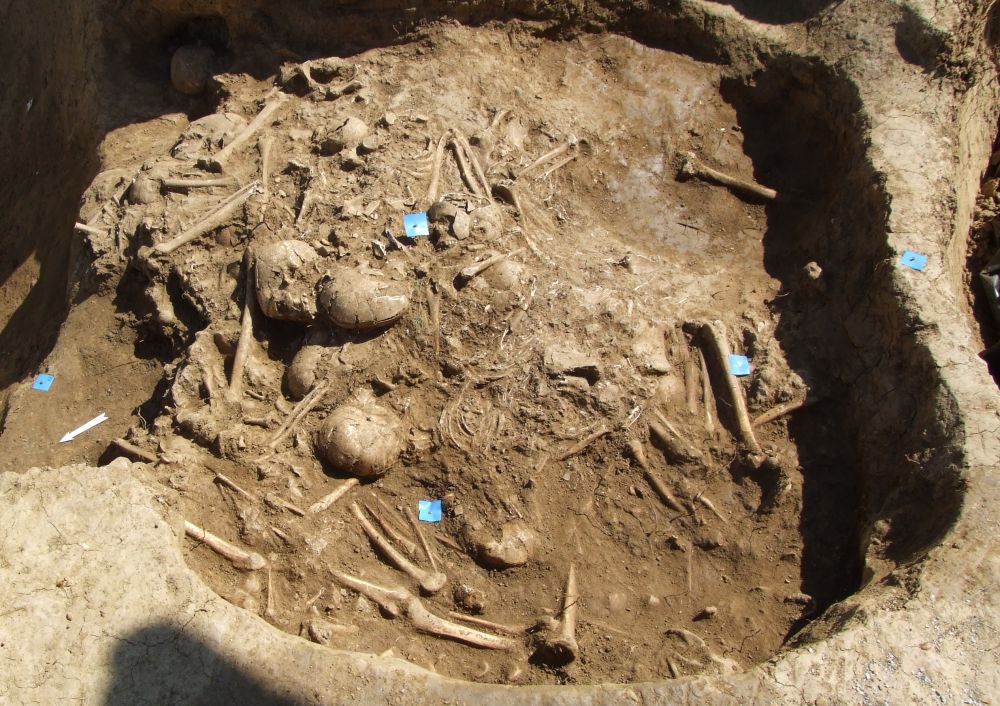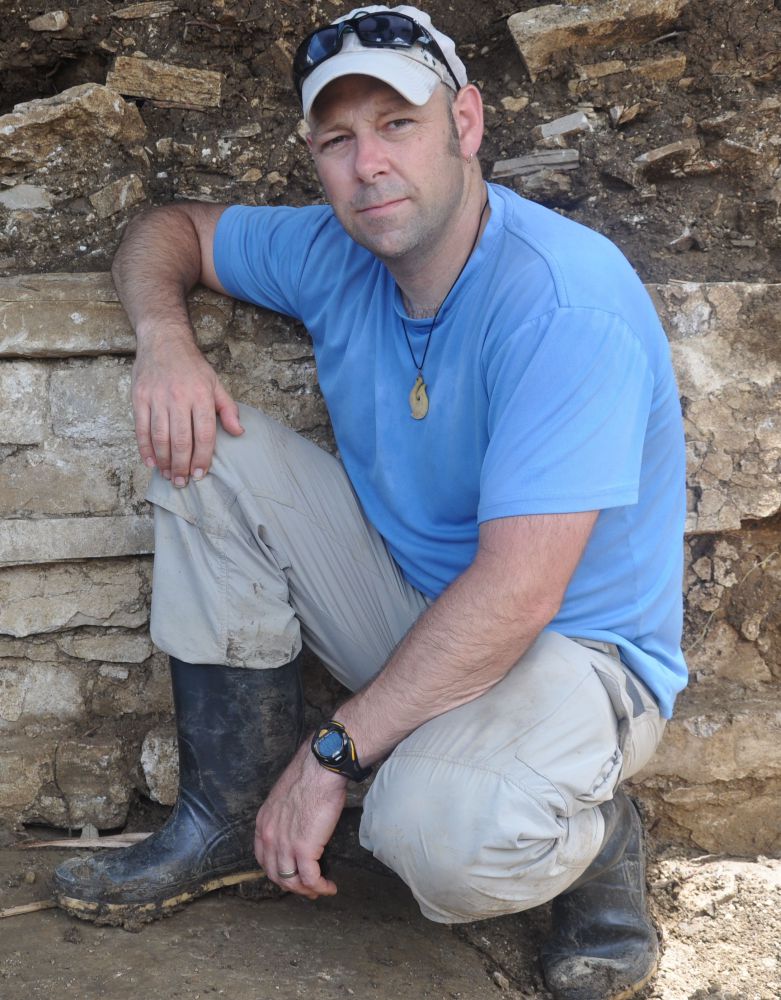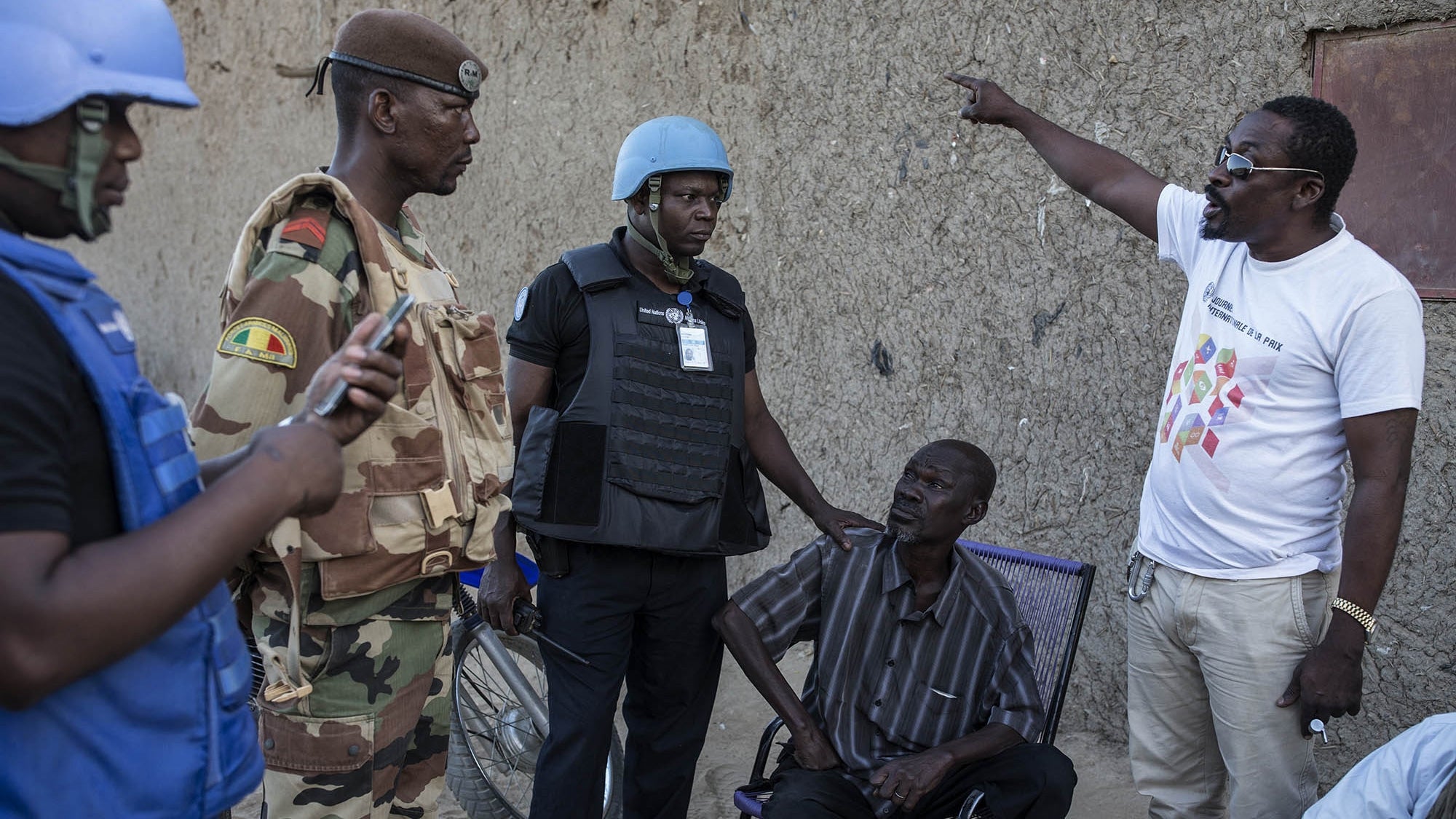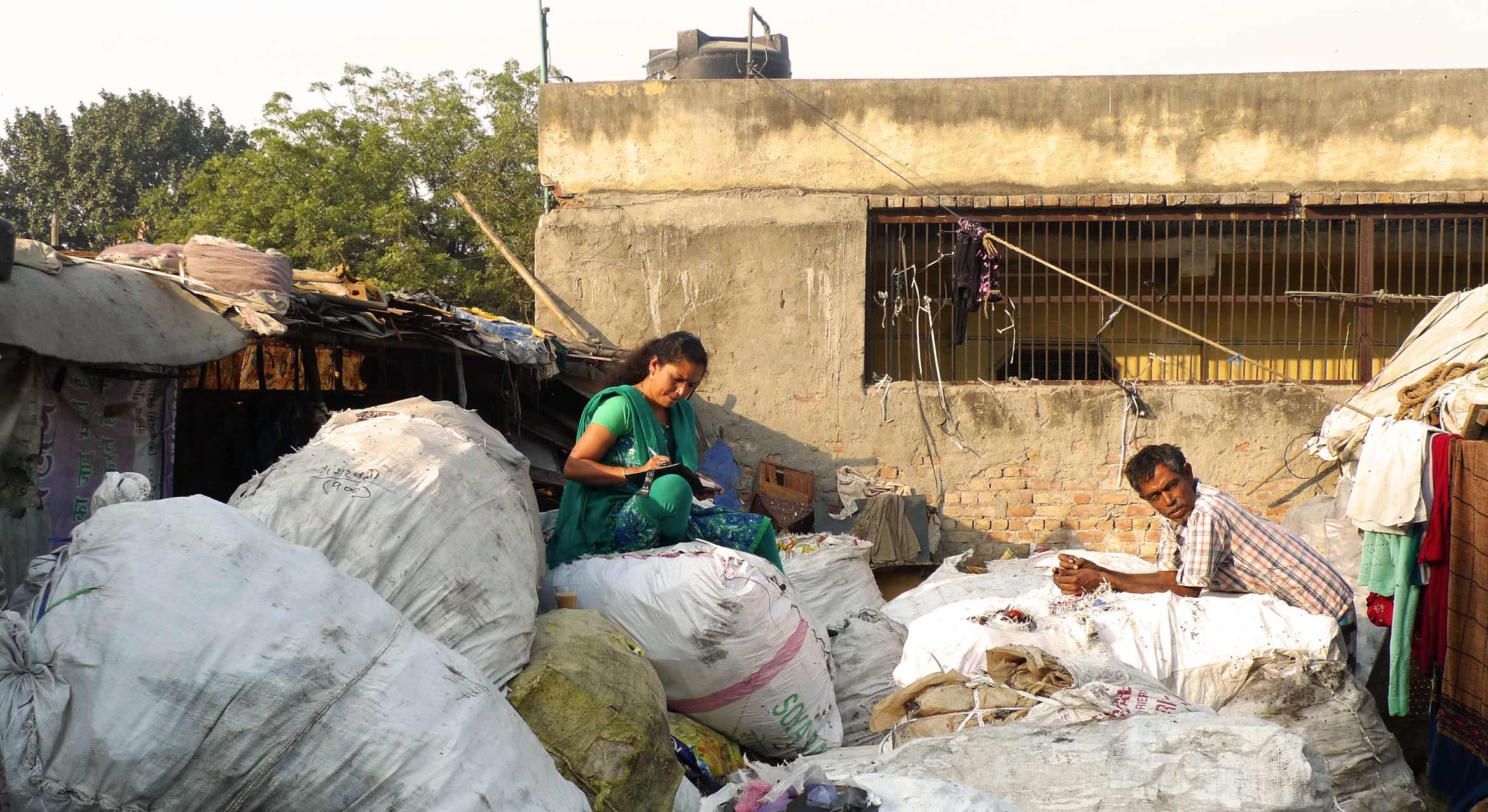
Hunger and Death


The crime scene at Potočani, Croatia, was a grim tableau. Some 41 people — men, women, children — had been dumped in a pit and covered with dirt. Their heads had been bashed in from behind with unknown weapons. In short, they had been executed, en masse.
The massacre, as grisly as it was, will never be “solved” because it’s roughly 6,200 years old, a Copper Age reminder of humanity’s capacity for violence.
To Sarah McClure, however, Potočani is a window into the harsh life of people from an enigmatic age. In a new paper in the International Journal of Osteoarchaeology, the professor of anthropology at UC Santa Barbara and her collaborators demonstrate that the massacre victims suffered from nutritional stress in the years leading up to their deaths.
“What we are finding from Potočani,” she said, “is that there may well have been a period of disastrous harvests or other kinds of food shortages leading up to the massacre, because a number of the children (5- to 10-year-olds) showed signs of scurvy and nutritional stress on their bones, but also in the stable isotope readings.
“We don’t know if nutritional stress was the cause of the massacre or perhaps one of the effects of a violent period in this region,” McClure continued, “but in the end all of these people were brutally murdered and dumped into a pit.”
In “Paleodiet and health in a mass burial population: the stable carbon and nitrogen isotopes from Potočani, a 6,200-year-old massacre site in Croatia,” the authors describe how analyses of carbon and nitrogen stable isotopes found dietary differences in the victims, primarily by age.
As McClure explained, Potočani — roughly 180 kilometers east of Zagreb — offers a rare opportunity to study a population at a single point in time.
“One of the cool things about this study is that we could compare people of different ages who presumably all lived together,” she said. “We found differences in diet between adult men and women, and between kids under 10 and older people. The difference in the kids surprised us, because why would an 8-year-old have a significantly different diet than, say, a 12-year-old?”
The answer, she said, lies in biology and bone growth rates. Kids grow faster than teens and adults, so their bones document more recent dietary practices. In adults, she explained, stable isotope values are averaged over about 10 years of dietary intake. In kids, however, it’s much faster.
“So, we interpret the differences in kids and adults to be more of a time marker,” McClure said. “The adults were probably suffering from the same food insecurity or nutritional deficiencies as the kids, but because kid bone remodels and grows faster, we ‘see’ this deficiency in their bones but not in the adult bones that are averaged over a longer time period.”
Douglas J. Kennett, a professor of anthropology at UCSB and a co-author, analyzed the stable isotopic composition of the victims’ bones. It’s a well-established technique for examining diet, he said.
“This is because ‘you are what you eat,’ and the stable isotopic composition of our bones reflects what we eat,” Kennett said. “We can also detect dietary stress or starvation in elevated nitrogen isotope values, and this is exactly what we see in this population that was clearly under siege for a long period of time prior to the massacre that simultaneously took their lives.”
The people killed at Potočani were part of the Copper Age Lasinja culture in central-eastern Europe. The mass grave is one of only two such burial sites that have been uncovered in Croatia.
“The Copper Age in this area is a bit enigmatic because there are relatively few sites that have been excavated in comparison to other time periods,” McClure said. “What we do know is that people were subsistence farmers, had fairly large herds of cattle, and lived in small- to medium-sized villages. They likely interacted a lot with each other through trade routes, and we also see the beginnings of metallurgy (hence the name of the period) during this time.”
Mass graves in Europe from the Neolithic and the Copper Age are not rare. But many of those burial sites, the study notes, “have a ritual character where human bodies were intentionally placed and accompanied with ceramic vessels, animal remains, and include traces of fire.” These characteristics are absent from Potočani.
In a macabre way, the killers of the people at Potočani gave today’s researchers a rare glimpse into the fraught existence of our distant predecessors.
“Potočani provides an unparalleled opportunity to study prehistoric dietary variability in a population,” Kennett said. “The data provide a remarkable snapshot of the impact of persistent conflict or environmental instability on food security and dietary stress.”



